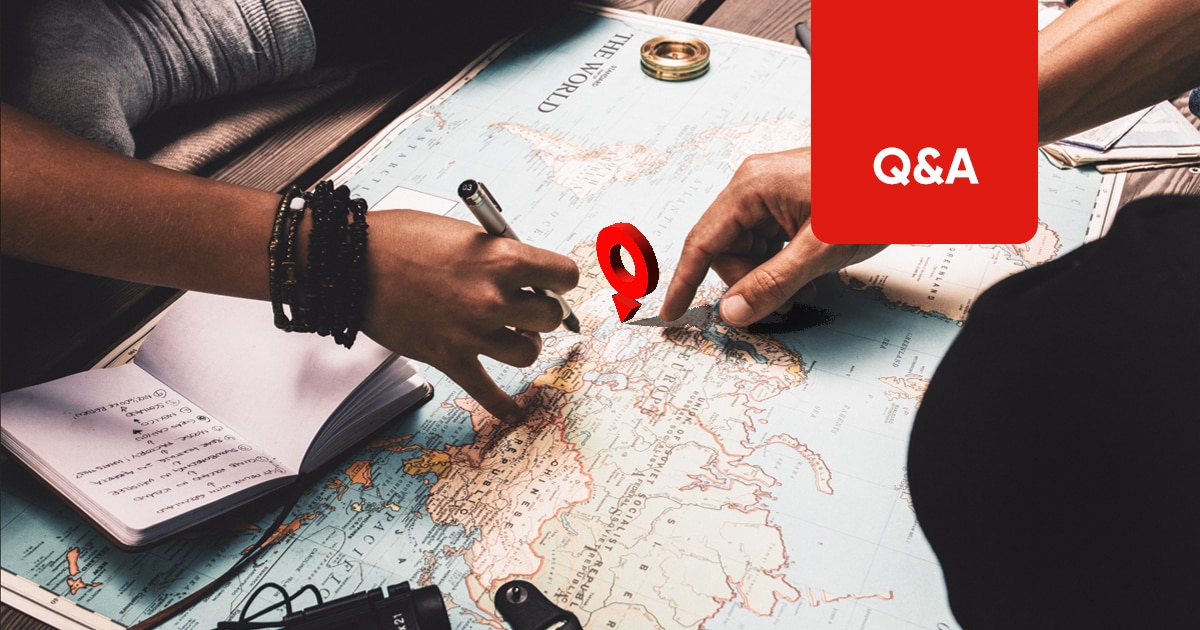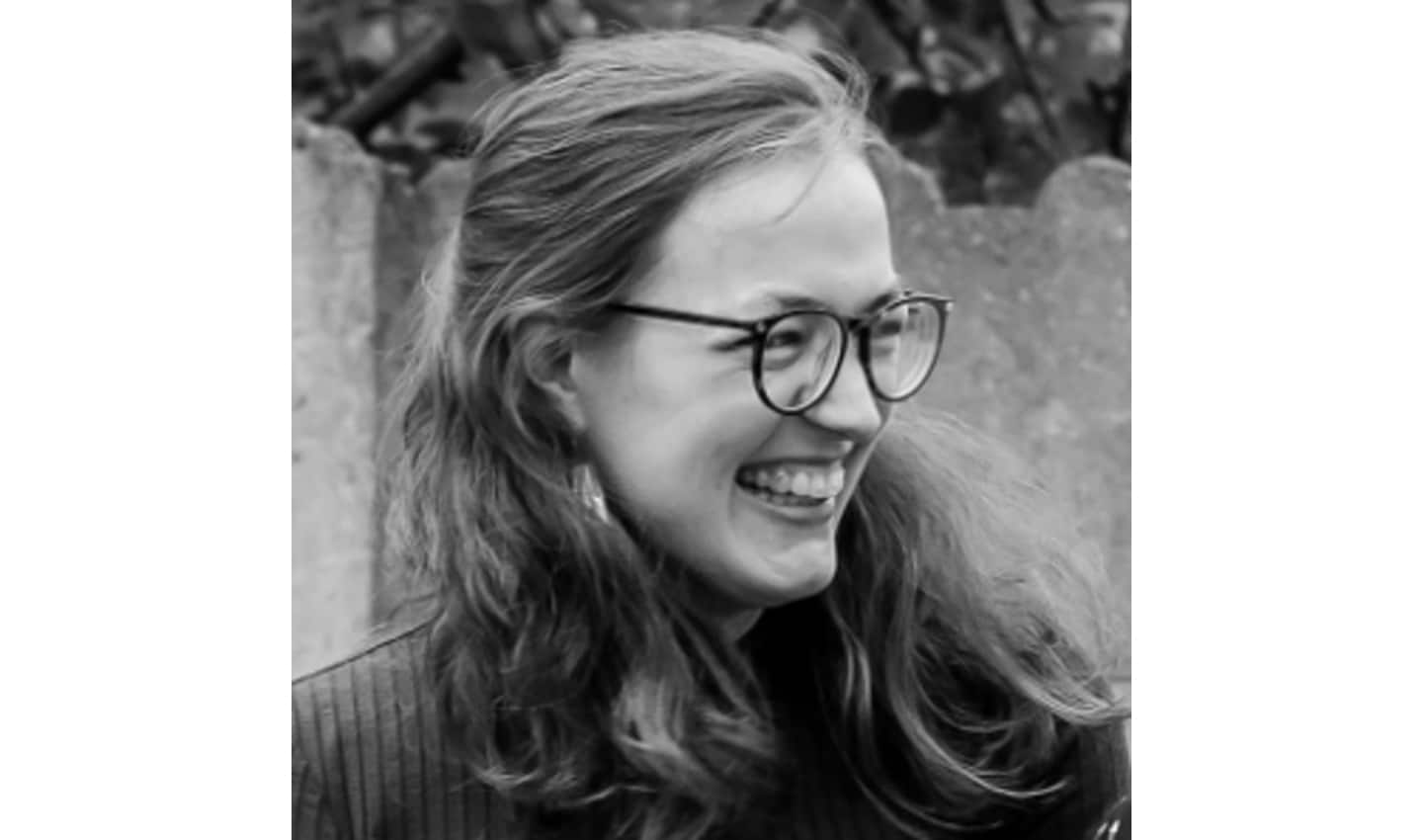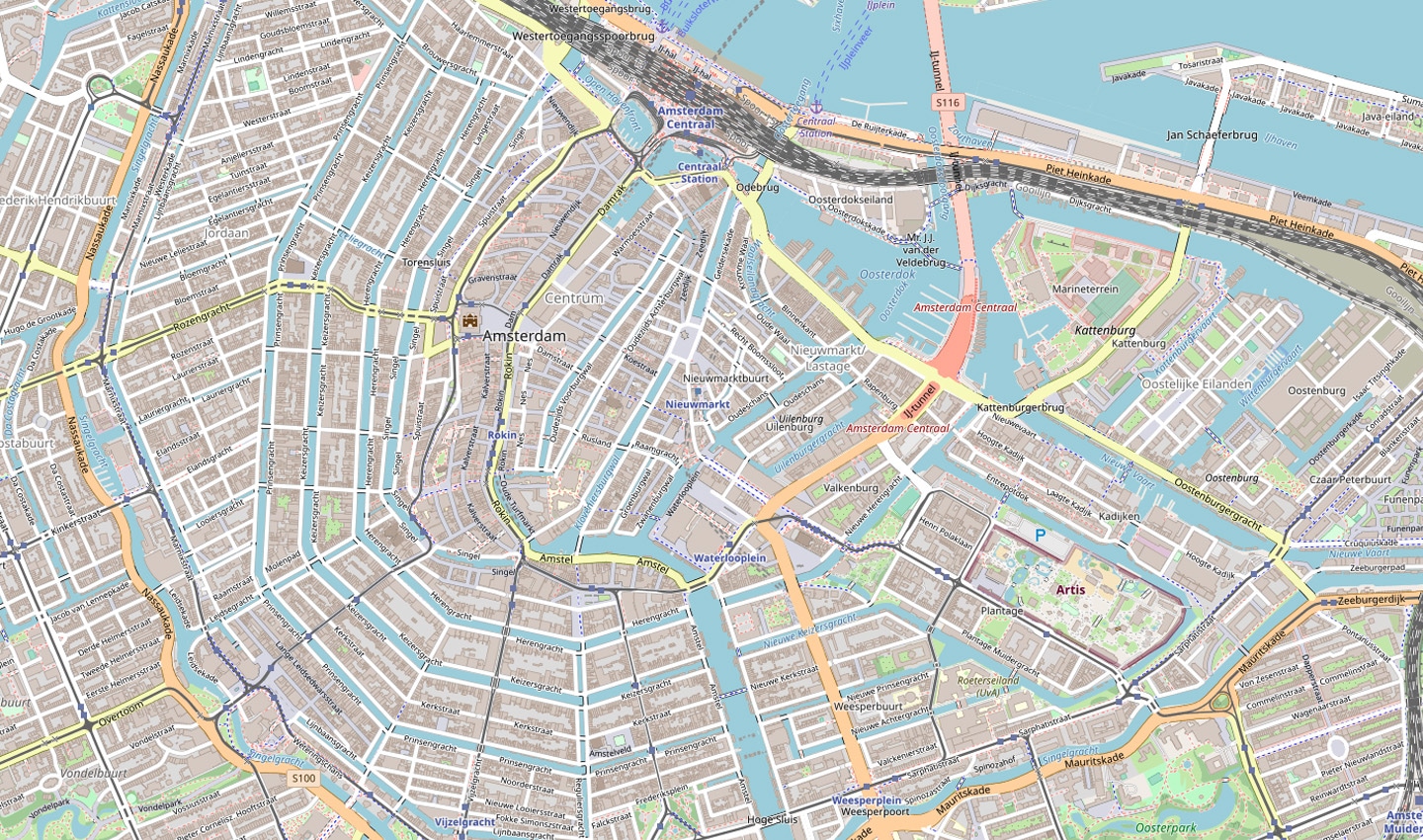
It’s been a few months since TomTom announced its new Orbis Maps and data ecosystem. Since then, the company has also announced its involvement in the Overture Foundation, an open map data project. The wider open mapping community is an important part of the future of location tech, so in this week’s Q&A we talk to someone working close to the world of open mapping and community-built maps.
TomTom Editorial: Who are you and what do you do at TomTom? What does your job involve?I’m Marjan Van de Kauter, and I’m a community manager in TomTom’s OpenStreetMap (OSM) outreach team.
My colleagues and I build relationships with the OSM community and establish ways to collaborate with them on building a better map. We do this in many ways: by sharing data leads, making high-quality edits, co-developing and creating mapping tools, sponsoring events and local communities, hosting meetups for open mappers, volunteering on working groups and so on.
We also make sure that TomTom contributes to OSM according to the community’s guidelines. Mostly this is done through open communication about all our activities on OSM.
 Marjan is TomTom's OSM community manager. She spends her time speaking with the OSM community and finding ways to support their mapping efforts and iniativies.TTE: What’s your background? How did you find your way to this role?
Marjan is TomTom's OSM community manager. She spends her time speaking with the OSM community and finding ways to support their mapping efforts and iniativies.TTE: What’s your background? How did you find your way to this role?MVdK: I’ve always had an interest in communications and technology. After discovering the world of Natural Language Processing in my master’s year of translation studies, I became a researcher in my university college’s language and translation technology team.
Later on, I boosted my writing and communication skills while working as a copywriter and e-learning architect. At the beginning of 2018 I was hired by TomTom to work on map product documentation, specifically release notes, as a Documentation and Training Developer. When these activities moved to a different unit in 2021, I joined the OSM outreach team.
Some people are surprised by my switch from technical writer to community manager, but my role change felt very natural to me.
Writing is only a part of my job today, but my main goal is still the same: to communicate. Transparency is of the utmost importance in an open-source community, so our team needs to clearly and accurately describe the improvements TomTom makes in OpenStreetMap.
On top of that, collaborating with the OSM community is important. And we can only do that in a meaningful way if we truly listen to their viewpoints, needs and concerns, and represent them within TomTom.
TTE: In November last year TomTom announced the new Orbis Maps and supporting ecosystem of partners that will supply data to its new map. OSM is a core part of that, tell us more about that.MVdK: OSM is a global map built by a volunteer community of over 9 million users. Every day, thousands of mappers make millions of updates to the OSM map.
The coverage and detail created by this huge community is remarkable, which is why OpenStreetMap data is such a valuable resource. Once TomTom starts using data from OSM in its new map, we will share back any improvements we make in compliance with OSM’s ODbL license.
But we will also support the OpenStreetMap community and its projects in many other ways, as we are already doing today. The community of mappers is what makes OSM unique, and they’re just as important as the data they create.
 OpenStreetMap is a community created map. It's rich, detailed and focuses on mapping the feautres that matter to individuals. If something matters to you and it's not on the map, you're in the power to add it!TTE: What role does TomTom play in the world of global mapmaking right now? How do we see that position evolving with this announcement?
OpenStreetMap is a community created map. It's rich, detailed and focuses on mapping the feautres that matter to individuals. If something matters to you and it's not on the map, you're in the power to add it!TTE: What role does TomTom play in the world of global mapmaking right now? How do we see that position evolving with this announcement?MVdK: TomTom has been one of the world’s leading mapmakers for a long time, and now it’s leading the industry into a future of collaboration. It might sound simple, but that’s going to create waves through the industry and shift how business is done and maps are made.
The mapping ecosystem we’re building, I think, will be a game changer. Joining forces with commercial partners and communities like OpenStreetMap will result in an increased number of updates being made to the map. They’ll be made much faster too.
TTE: How does OSM work? How does such a wide and diverse community come together to make one of the most detailed maps of the planet?MVdK: Most OpenStreetMap users are volunteers, so they map what they love and care about. And the millions of OSM users all care about different things. As a result, OSM contains an enormous variety of features, ranging from highways and buildings to rainbow crossings and bomb craters.
I highly recommend browsing the OpenStreetMap Wiki and looking at some of the map features pages. As you go down this rabbit hole, you’ll be amazed by the niche features some users are working on.
[Editor’s note: It truly is a rabbit hole. People map seemingly everything, including Kneipp Water Cures, a kind of outdoor foot bath commonly found in German speaking countries. And Sump Busters, a type of vehicle barrier that’s designed to only permit vehicles with high enough ground clearance.]
TTE: Community input from a range of sources seems really important to making good maps, why? How do you coordinate such a diverse community?MVdK: Different sources have different strengths. By making use of data from a diverse set of sources, you can build a higher-quality map that can be used in a wider range of scenario.
What’s interesting about the OSM community, is that it’s not actually being coordinated.
There’s the OpenStreetMap Foundation, which supports the project and its community, but it doesn’t control it. At the end of the day, OSM is a self-regulating community and that’s what makes it work.
Users are motivated to map because they have the freedom to do so without being weighed down by a lot of top-down rules. They’re free to map what’s significant to them.
But that doesn’t mean OpenStreetMap is merely a group of individuals all doing their own thing, brought together by their love for mapping. They also team up to improve OSM in specific areas.
And, they do have some community guidelines (not rules) in place to help each other maintain the quality of the map.
TTE: You’re in a unique position, close to the OSM community. What is special about the OSM community to you? What makes OSM and its community so valuable to TomTom and its partners?MVdK: As I mentioned before, the OSM community mostly consists of volunteers. They work on the map not because they’re being paid to do so, but because they love it.
Many of them say that once you get sucked into OSM, there’s no going back. Some users won’t rest until they have their whole area mapped — you will often see one or two users making 90% of all the edits in a project.
And, in many regions you will find mappers who are constantly keeping an eye out for new edits, fixing errors being made and helping new users get better. Obviously, a community this dedicated to protecting the quality of its map and striving for 100% completeness is an invaluable mapmaking ally.
TTE: What excites you about being able to work with such a community?MVdK: OSM users are passionate mapmakers, and it’s stimulating to connect with people who really love what they do.
I’m also fascinated by the diversity of this community — not only when it comes to its mapping interests, but also the cultural and academic backgrounds of its members. These factors all influence the way people map and talk about mapping. It’s one of the things that makes the OSM community so interesting. But it also poses a lot of challenges.
How can a global community overcome these differences to effectively communicate and collaborate with each other? Because of my background, the language barrier, in particular, interests me. In the future, I’d like to connect with the members of the community already working on this challenge and find ways to help them using my communications and language skills.
[Editor’s note: I’ve lost count of the number of languages Marjan can converse in.]TTE: How do you see the relationship between OSM and TomTom working and evolving into the future?MVdK: Just like OpenStreetMap, TomTom is a community of map enthusiasts.
I see our OSM outreach team bringing these two communities together and enabling them to find ways to work together based on shared interests and complementary skills. One way to do this is to organize meet-ups together, which we recently did with the OSM Belgium community in our TomTom Ghent office.
To create meaningful collaborations with the OSM community, I truly believe it's important to personally, and directly, connect TomTom’ers and OpenStreetMappers, who can inspire and help each other with their different insights and skills.
I’m looking forward to TomTom’ers and OSM community members meeting in this way in the future. And I’m excited to see what they can do with the data, tooling, sponsorship and other support we’ll continue providing.
Can you give a perspective on what it's like for women in the OSM and open mapping community? What important roles do they provide?MVdK: Like I said before, every mapper has their own interests, which are reflected in the edits they make and the projects they work on.
Many women in OpenStreetMap are out there initiating map improvements that benefit women in particular. They are mapping vending machines for feminine hygiene products, breastfeeding facilities, changing tables, those kinds of things. By doing that, they’re making OpenStreetMap more diverse in coverage, and more valuable for women.
In some cases, women in the OSM community are even working to save lives. An example that comes to mind is the Crowd2Map Tanzania project founded by Janet Chapman of the Tanzania Development Trust. The goal of Crowd2Map is to map rural Tanzania and consequently support the fight against female genital mutilation, since a better map makes it easier to get to vulnerable girls before these atrocities take place.
What advice do you have to young girls and women perhaps wanting to pursue a similar career to yourself, get into tech or mapping/location tech?MVdK: First of all, it’s never too late to pursue a career in tech, or any specific field of tech. When I started studying linguistics, I didn’t envision the kind of work I’m doing at TomTom, but today it’s hard for me to imagine a job outside of tech.
Secondly, this may sound obvious, but you, as a woman, are capable of everything a man is capable of, and you can strive for any career opportunity a man would strive for, even if society doesn’t always allow women to be as go getting or ambitious. Never apologize for being fierce in your efforts to achieve what you want.
Finally, surround yourself with fellow women who support you and your growth. And make sure you are the ally to other women that you want them to be to you. In an industry or even a world where men do not necessarily have our back, we should at least have each other's.
Are there any noteworthy things, that really stand out to you, that the open community has done to support women mappers?
MVdK: The concept of sisterhood is definitely alive in OpenStreetMap. There are multiple groups aimed at encouraging women to map.
Geochicas, for instance, is a women’s mapping community. They have members in multiple countries, mostly in Latin America, and work to eliminate the gender gap in the OSM community.
Another group of women I recently got to know better is Geoladies PH, which aims to create a safe space for women and under-represented communities in OpenStreetMap in the Philippines. Groups like this help new women users find their place in the community. So, if you’re a woman starting to find her way in OSM, don’t hesitate to connect with these fellow ladies and be inspired.
Check back soon to read what other TomTom’ers have to say about the company’s new strategy and Orbis Maps. We’ve got talks with people from TomTom’s OSM outreach team, product team and more from the technical folks behind the new map. [Answers have been edited for brevity, clarity and style.]People also read
)
TomTom's CTO, Eric Bowman, on the company's new strategy and Orbis Maps
)
Q&A: A TomTom Engineering VP on new Orbis Maps, real-time mapping and the future
)
The world needs a better map: TomTom is making it with its new Orbis Maps and ecosystem
)
Super sources will power the 'freshest map on the planet.' But what are they?
* Required field. By submitting your contact details to TomTom, you agree that we can contact you about marketing offers, newsletters, or to invite you to webinars and events. We could further personalize the content that you receive via cookies. You can unsubscribe at any time by the link included in our emails. Review our privacy policy. You can also browse our newsletter archive here.
)